Calgary, Alberta depicted by community type. Sage Hill is highlighted to show its general location within the city. (MAP CREATED WITH QGIS, DATA FROM CALGARY OPEN DATA PORTAL)
Breakdown of the types of land cover in Sage Hill by percentage, total land area represented is 376.76 hectares. (DATA FROM CALGARY OPEN DATA PORTAL)
and small fish
The community contains two areas with major storm ponds which are connected by streams and creeks. DATA FROM CALGARY OPEN DATA PORTAL
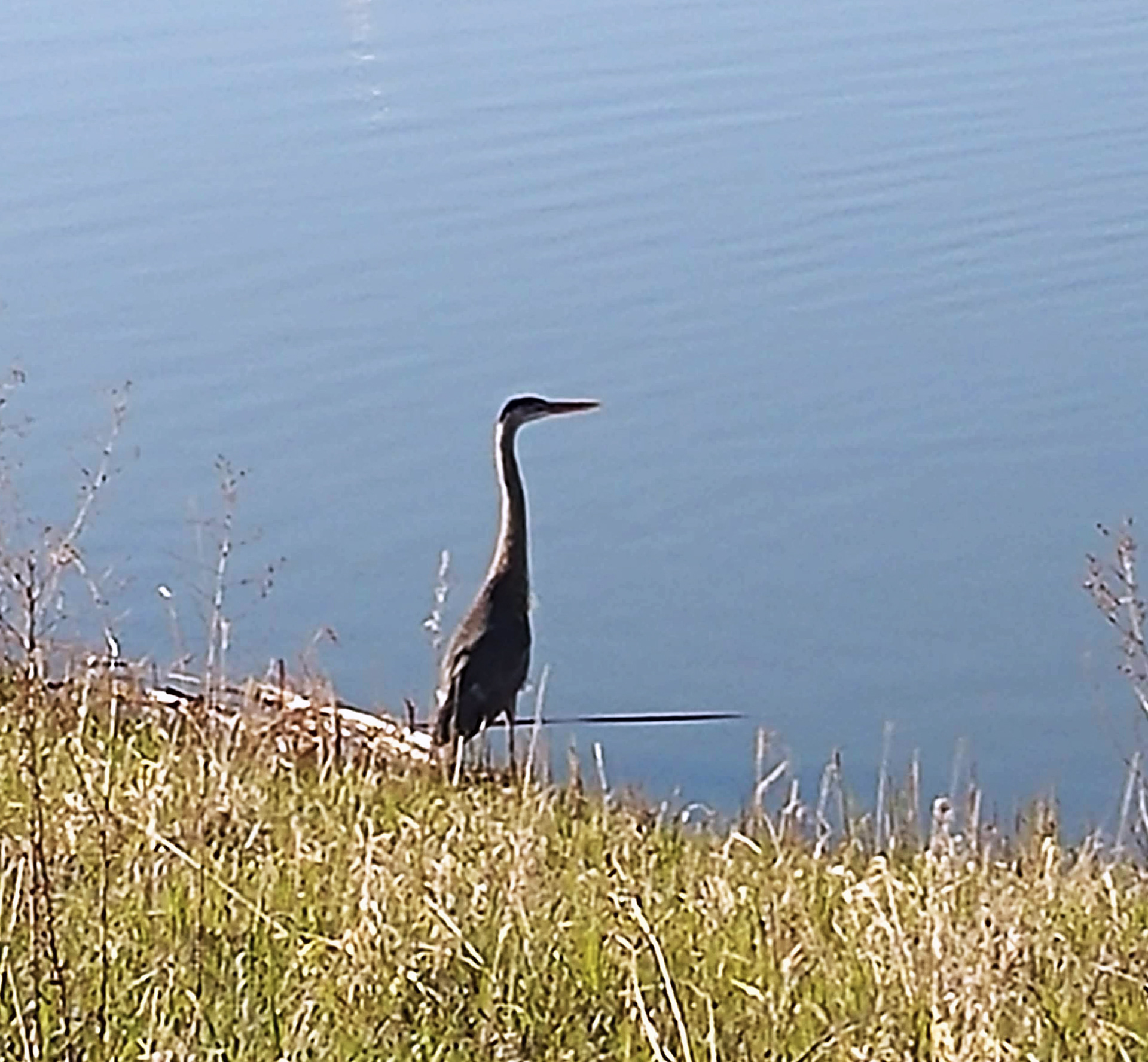
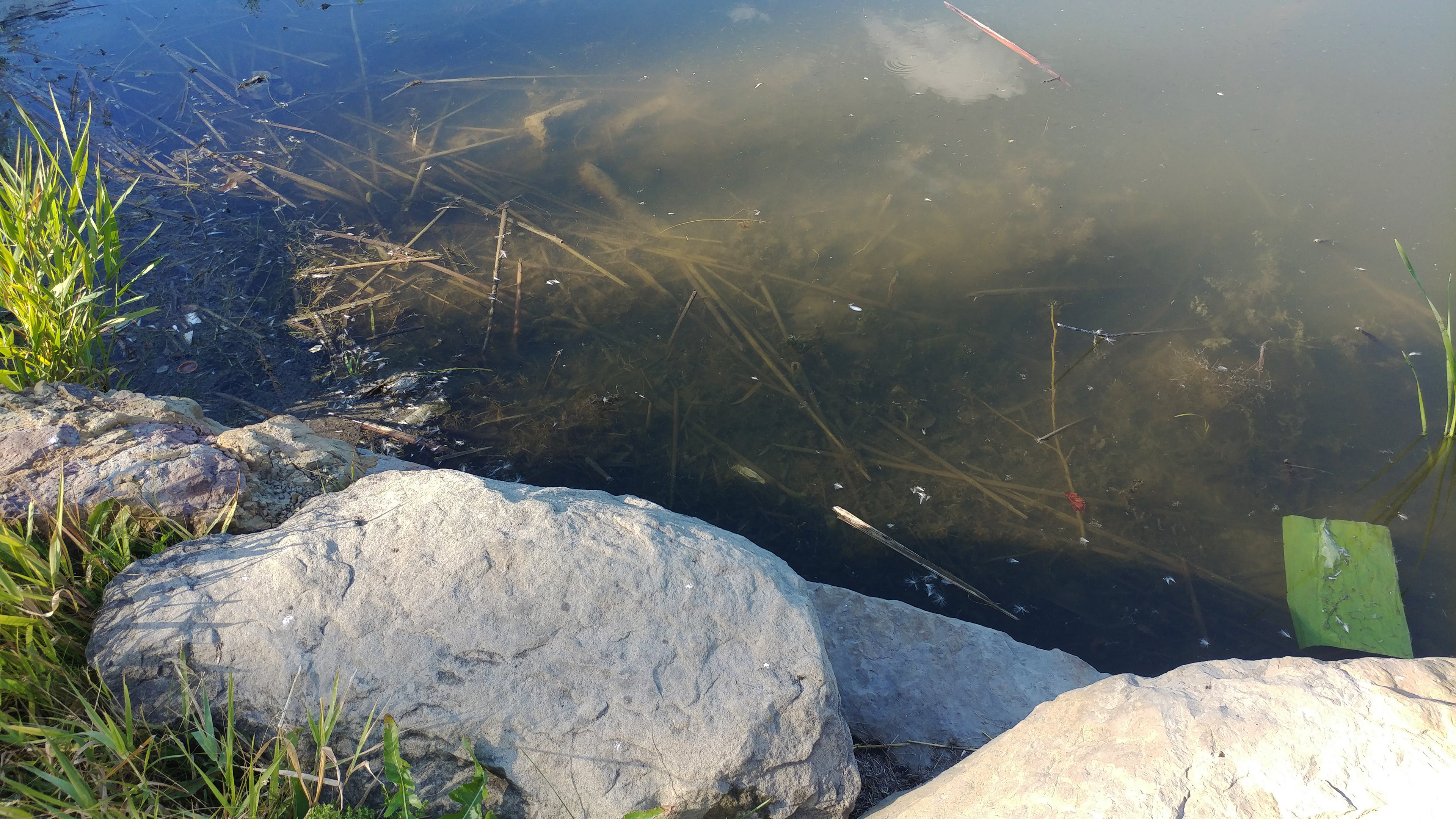

More than 40 types, 93.5% deciduous and 6.5% coniferous trees.
The top five most abundant trees are: Brandon Elm (Ulmus americana 'Brandon'), 701 trees; Trembling Aspen (Populus tremuloides), 524 trees; Green Ash (Fraxinus pennsylvanica), 234 trees; Schubert Chokecherry (Prunus virginiana 'Schubert'), 224 trees; and Mayday (Prunus padus), 151 trees.
The community has trees planted along the boulevards and along sidewalks. DATA FROM CALGARY OPEN DATA PORTAL

Few coniferous trees are present on the boulevards.
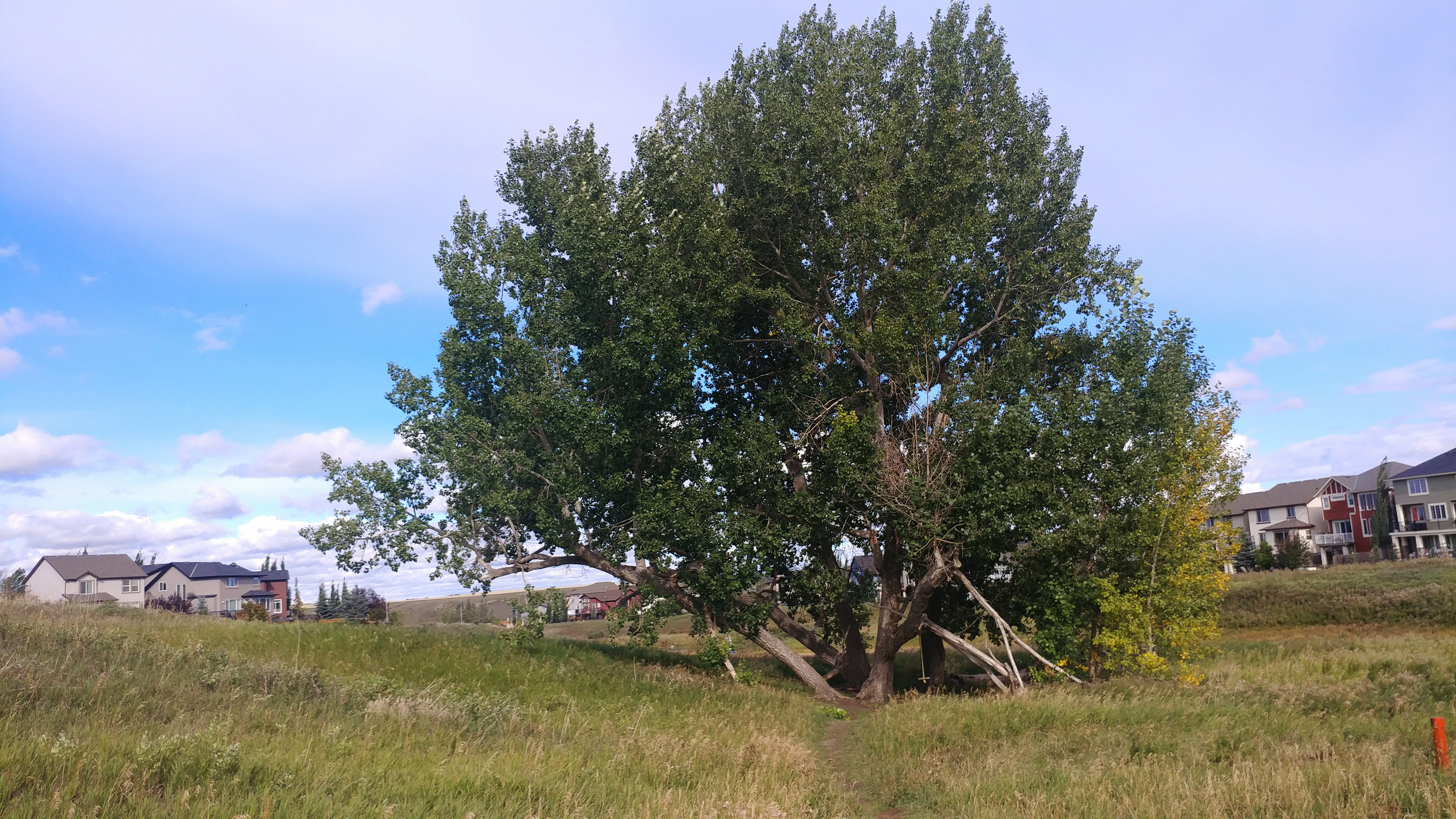
This is the original big tree in the neighbourhood.

This is a close up of the "big tree" that the neighbourhood kids play in.

Here is a typical streetscape in Sage Hill.
Consists of various perennial grasses and invasive weeds.
The community features manicured grass on boulevards, surrounding playgrounds, and in residential yards. DATA FROM CALGARY OPEN DATA PORTAL
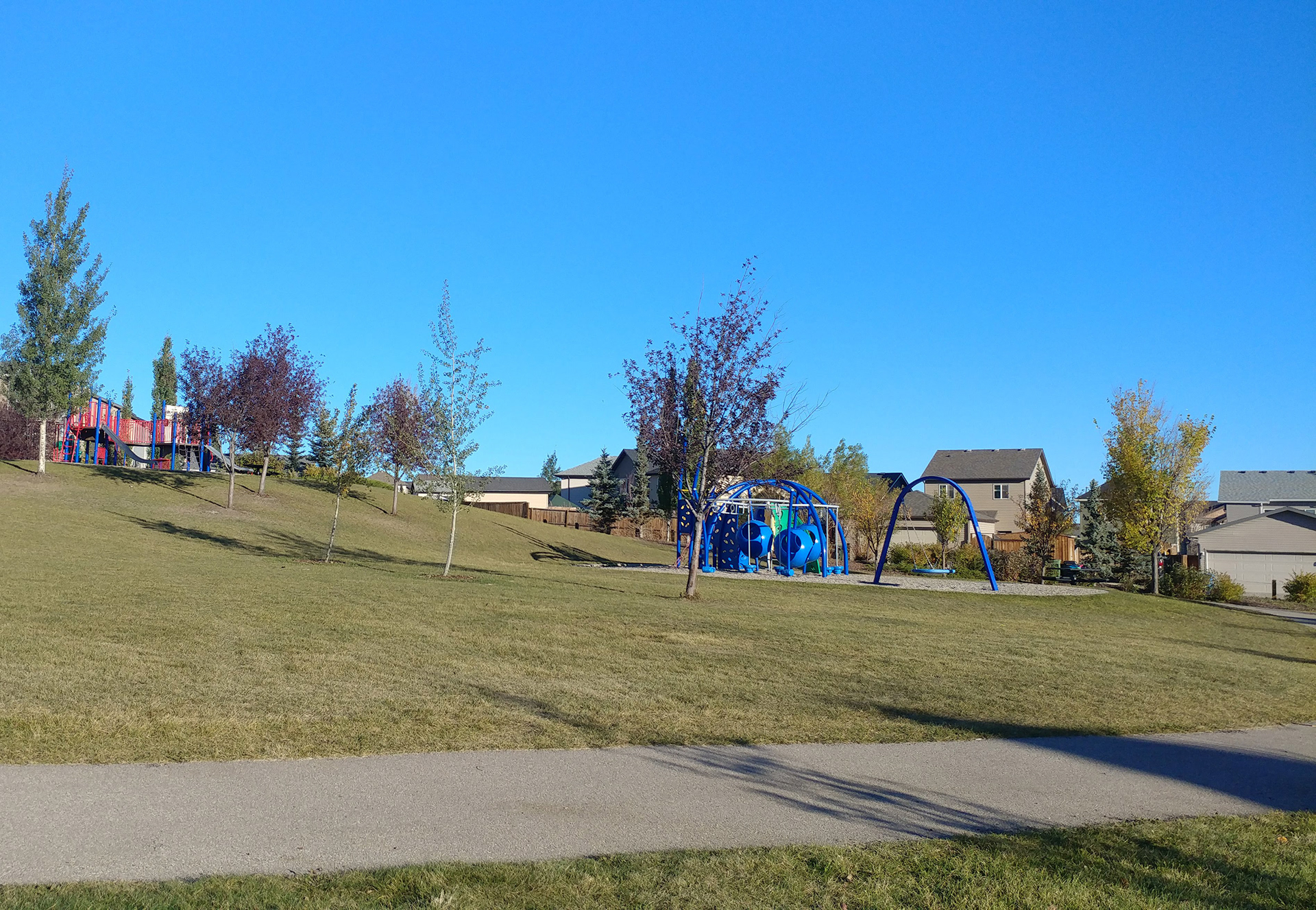
One of the many playgrounds with manicured grass.
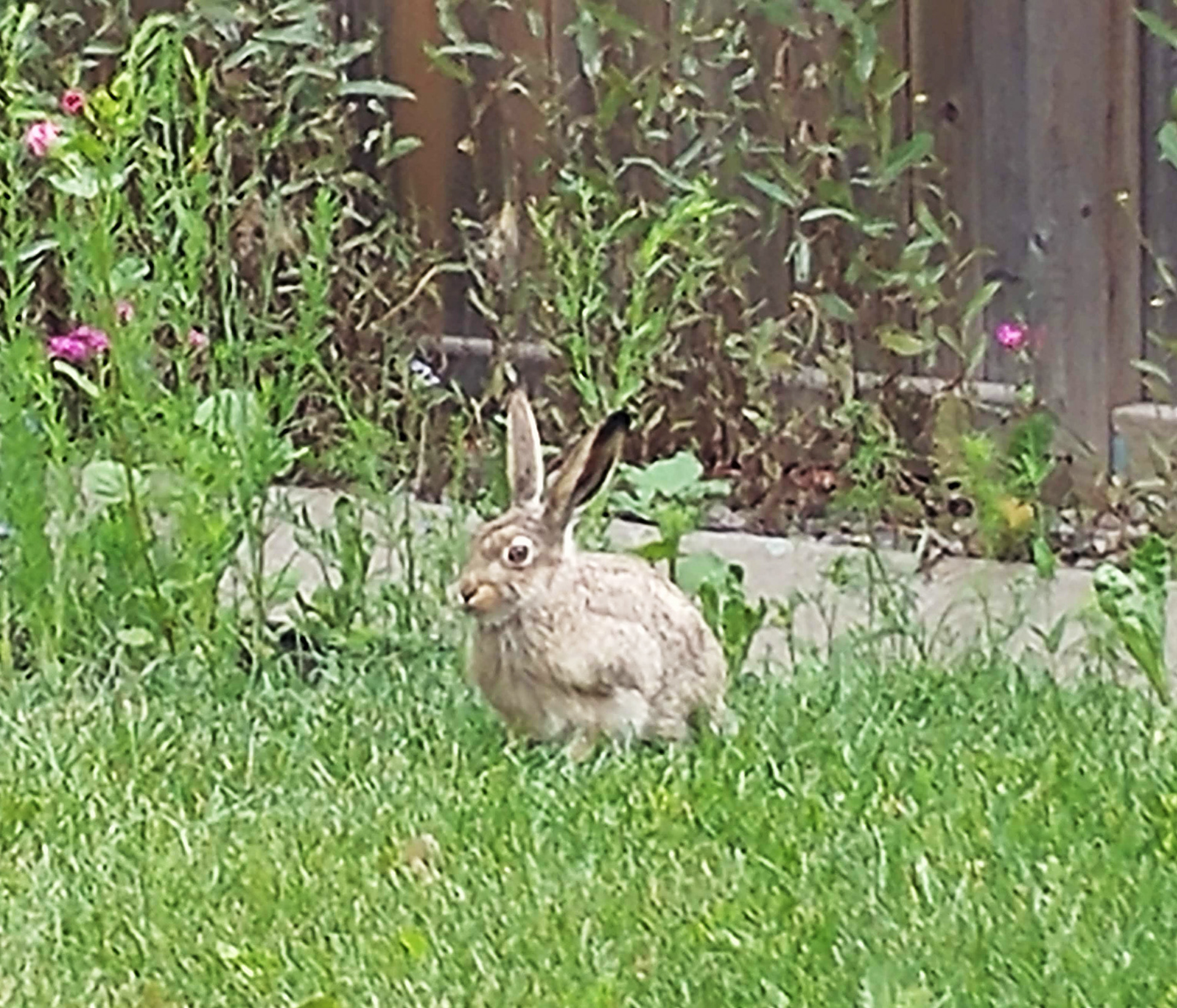
A local hare.
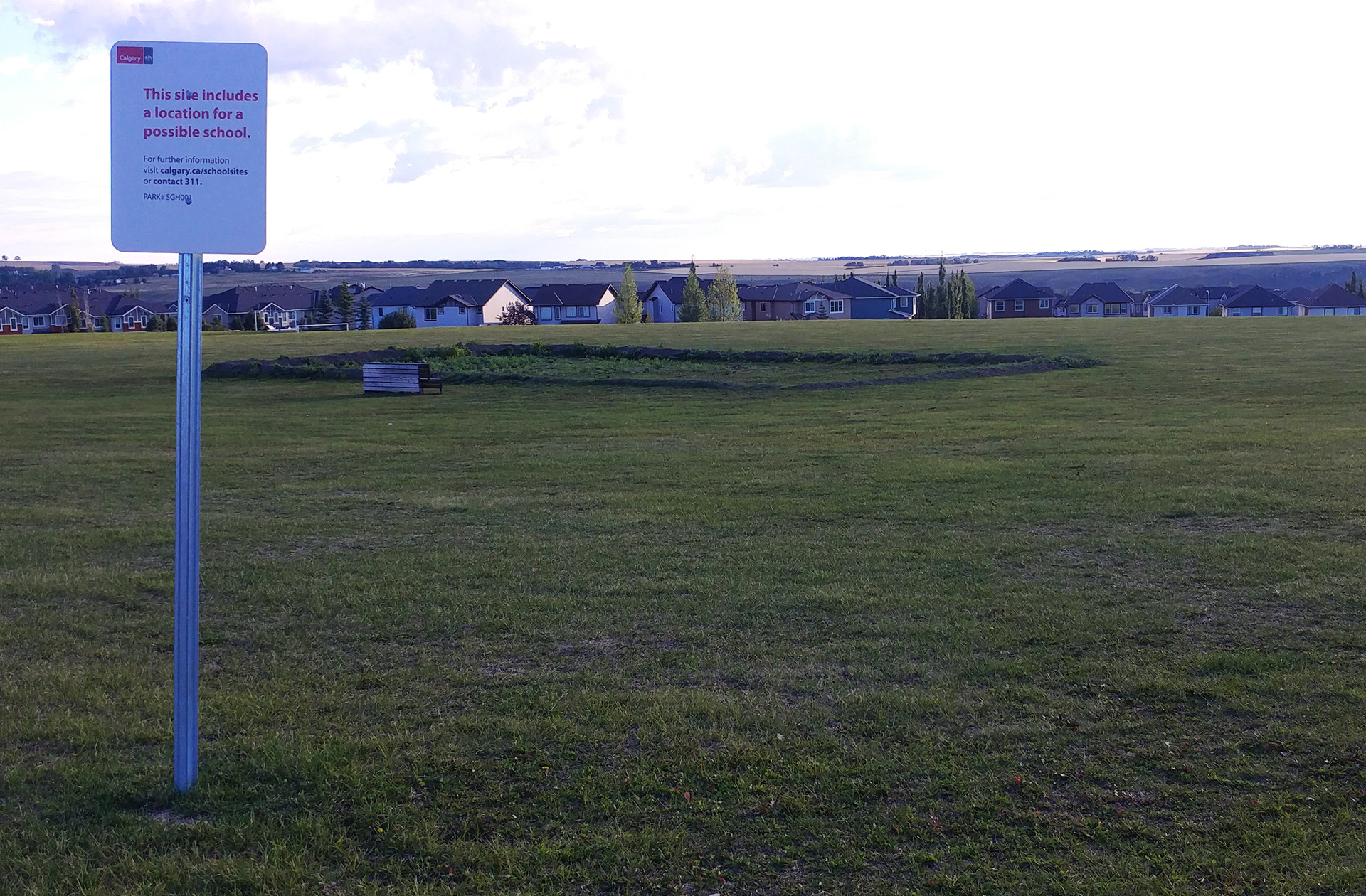
The "Future School" area.
Consists of a rich mixture of flowering plants,
a variety grasses, and small bushes.
The grasslands surround the multi-use pathways and storm ponds. DATA FROM CALGARY OPEN DATA PORTAL
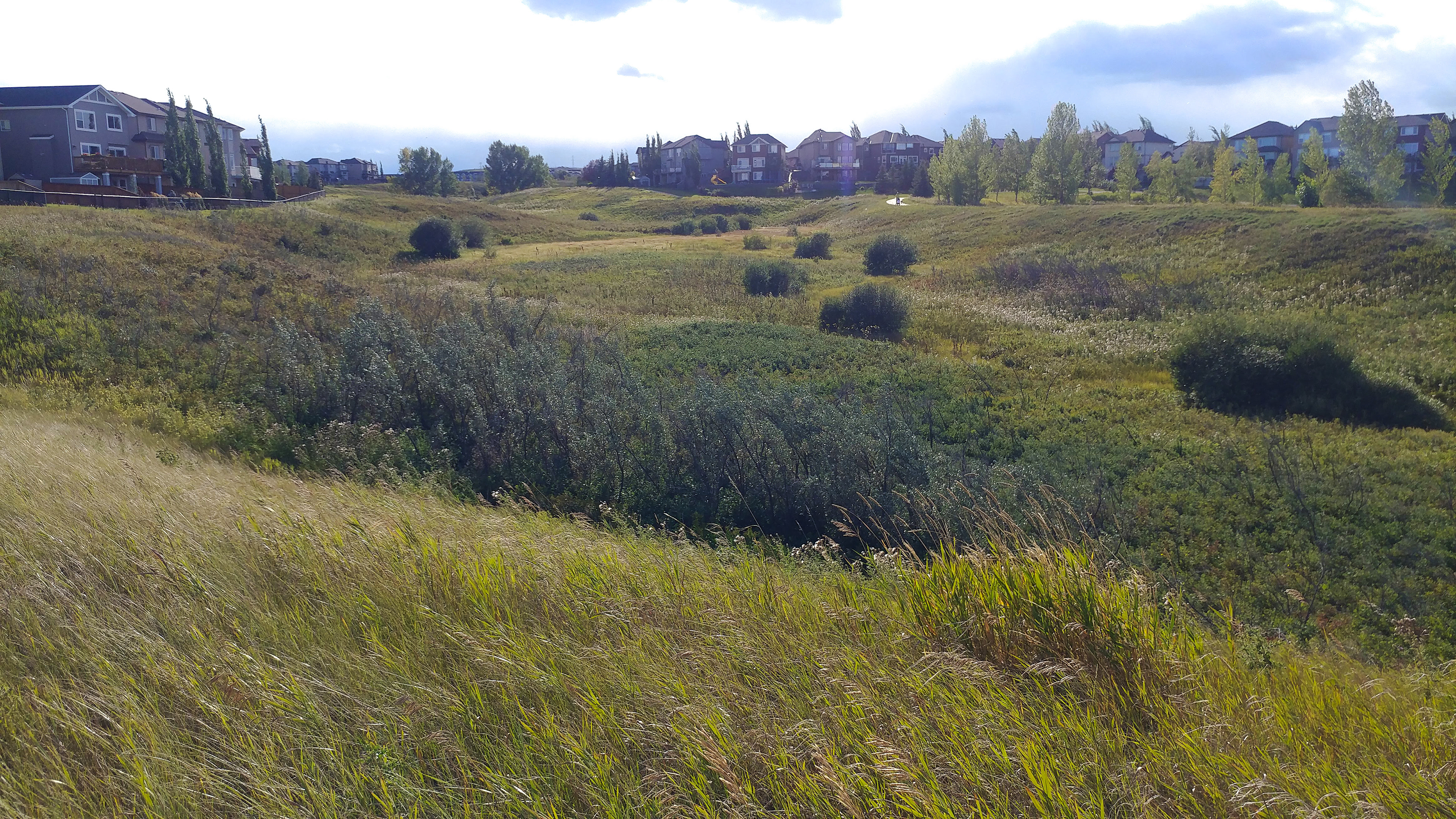
The ravines have naturally growing foliage.
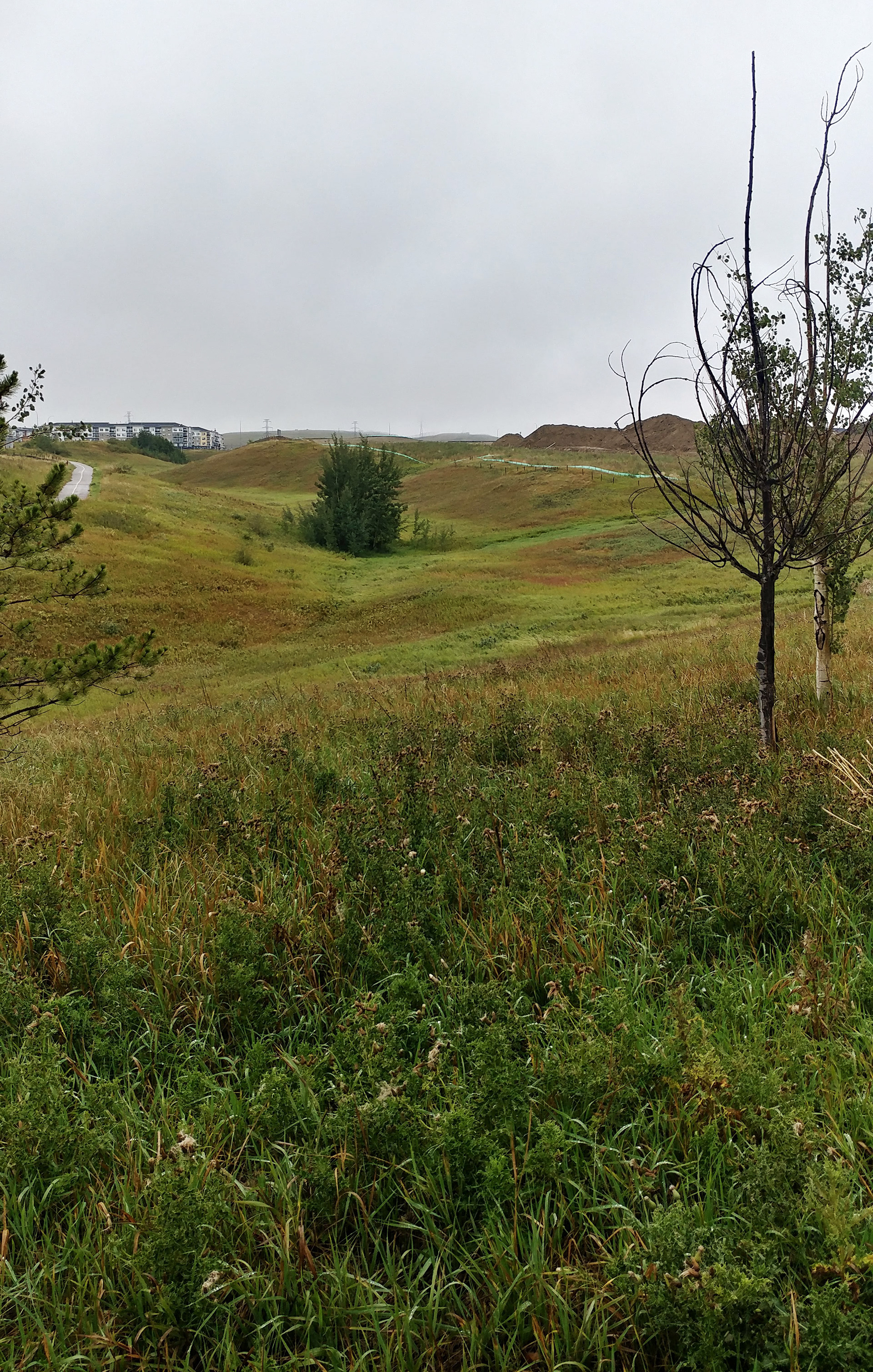
Grass and bushes change colour in the autumn.
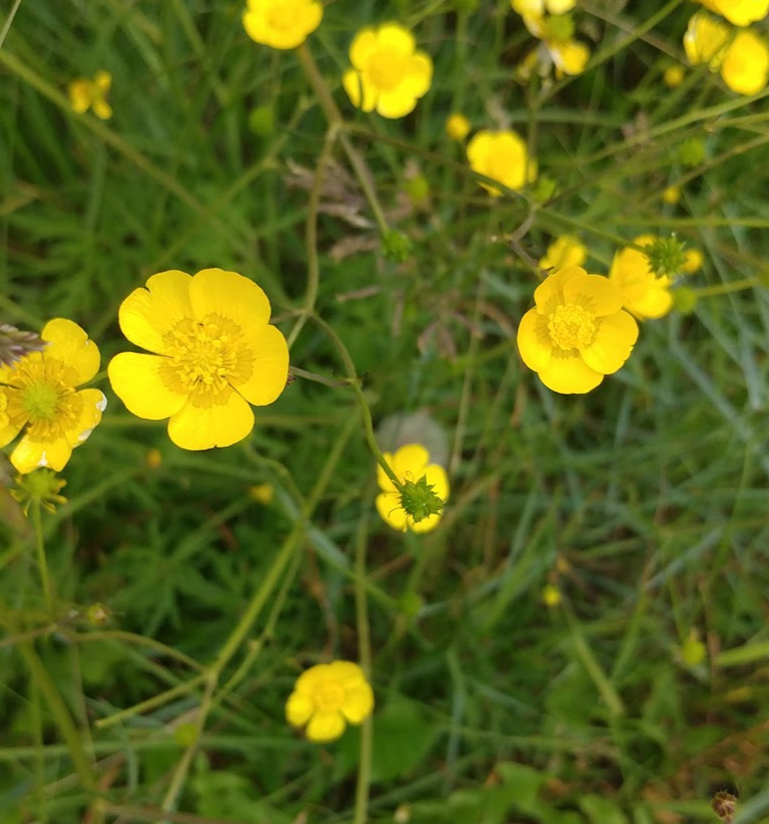
Yellow buttercup flowers that flourish in the grasslands.
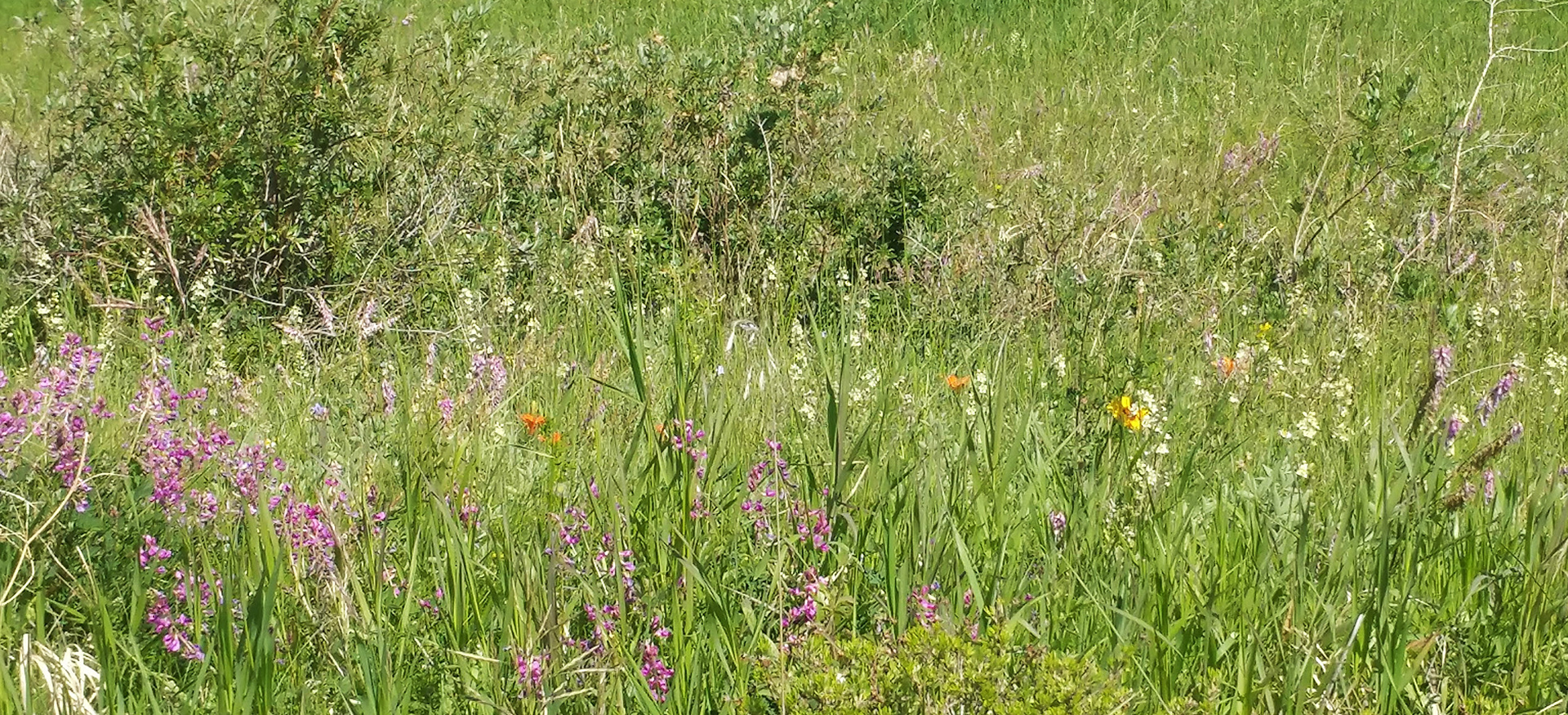
A variety of wildflowers growing in the untouched grassland area in Sage Hill.
DECISION MAKERS
Enhances ecosystem services.
Increases carbon uptake
mowing natural grassland
Reduce threat to wildlife.
Enhance wildlife habitat
Reduce threat to wildlife and humans.
Build community pride.
Belaire, J. A., Whelan, C. J., & Minor, E. S. (2014). Having our yards and sharing them too: The collective effects of yards on native bird species in an urban landscape. Ecological Applications, 24(8), 2132–2143. https://doi.org/10.1890/13-2259.1
Chiesura, A. (2004). The role of urban parks for the sustainable city. Landscape and Urban Planning, 68(1), 129–138. https://doi.org/10.1016/j.landurbplan.2003.08.003
City of Calgary. (2015). Glacier Ridge Area Structure Plan. Local Area Planning and Implementation – North, Planning, Development & Assessment.
Cormack, R. G. H. (1967). Wild Flowers of Alberta. The Queen’s Printer, Edmonton.
Gómez-Baggethun, E., & Barton, D. N. (2013). Classifying and valuing ecosystem services for urban planning. Ecological Economics, 86, 235–245. https://doi.org/10.1016/j.ecolecon.2012.08.019
Keeler, B. L., Hamel, P., McPhearson, T., Hamann, M. H., Donahue, M. L., Meza Prado, K. A., Arkema, K. K., Bratman, G. N., Brauman, K. A., Finlay, J. C., Guerry, A. D., Hobbie, S. E., Johnson, J. A., MacDonald, G. K., McDonald, R. I., Neverisky, N., & Wood, S. A. (2019). Social-ecological and technological factors moderate the value of urban nature. Nature Sustainability, 2(1), 29–38. https://doi.org/10.1038/s41893-018-0202-1
Millennium Ecosystem Assessment. (2005). Ecosystems and Human Wellbeing. In Assessment of Climate Change in the Southwest United States: A Report Prepared for the National Climate Assessment.
Monteiro, J. A. (2017). Ecosystem services from turfgrass landscapes. Urban Forestry and Urban Greening, 26(April 2016), 151–157. https://doi.org/10.1016/j.ufug.2017.04.001
Salmond, J. A., Tadaki, M., Vardoulakis, S., Arbuthnott, K., Coutts, A., Demuzere, M., Dirks, K. N., Heaviside, C., Lim, S., MacIntyre, H., McInnes, R. N., & Wheeler, B. W. (2016). Health and climate related ecosystem services provided by street trees in the urban environment. Environmental Health: A Global Access Science Source, 15(Suppl 1). https://doi.org/10.1186/s12940-016-0103-6

